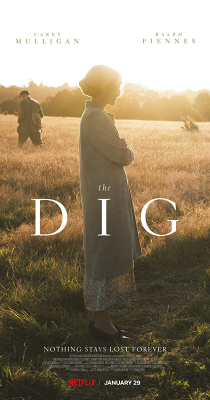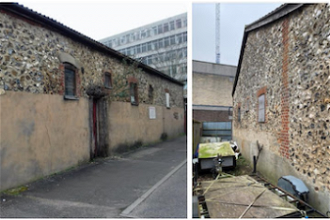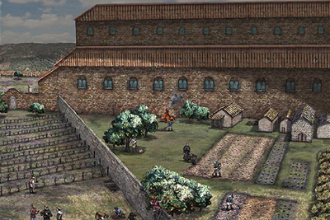Film Review: 'The Dig'

Official poster
Two wonderful exhibitions at the British Museum that I visited on school trips in the 1970s were the Tutankhamun Exhibition and the Sutton Hoo treasure. I remember them keenly. When the new film, 'The Dig', came out on Netflix last week, focusing on the 1939 discovery at Sutton Hoo in Suffolk, I watched it the same day.
Despite a stellar cast I was not expecting to find it so engaging and, well, spiritual. It is far from the usual archaeological action movie, with guns blazing over booby-trapped tombs, but I believe it is better. It tells a fascinating story of an archaeological dig uncovering a little-known period of British history and connecting the lives of different generations. It is a gentle movie, with calming music and gorgeous images. Rural England has never looked better. Director Simon Stone has captured the beauty of the Sutton Hoo discovery and site. I loved the backdrop of the light over the fields at various times of long summer days, providing silhouettes of the characters against the Suffolk skies, waterways and reeds. The film spotlights many locations on the Suffolk coast including Thorpeness Beach, Shingle Street, a footpath in Snape on Suffolk Wildlife Trust land and an RSPB site called Boyton Marsh. I watched it twice more in quick succession.
I loved finding out about the people too. Widow Lady Edith Pretty (Carey Mulligan) hires unorthodox digger Basil Brown (Ralph Fiennes) to investigate mysterious mounds in the grounds of her Suffolk estate. When Brown gradually uncovers an Anglo-Saxon burial ship in one of them, dating to around the sixth century, the discovery brings this quiet backwater to national attention. It was 1,400 years earlier when a great warrior - possibly King Raedwald, King of East Anglia - was laid to rest in a 90ft long ship, surrounded by extraordinary riches. Edith's young son Robert (Archie Barnes) has a terrific imagination and the viewer's mind too jumps around the generations as the great ship is unearthed. We imagine the scene as the warrior was buried with hundreds dragging the ship up from the nearby waterway. Henry VIII is said to have visited the mounds when they were already a thousand years old.
Edith and Basil have an intellectual intimacy. There is no romantic relationship but mutual respect. Basil is first to hear that Edith intends to generously gift the treasure to the British Museum in London. He is amongst the first to recognise Edith's failing health and comforts Robert. That anxiety is mirrored in the national context of war clouds looming, with fighter planes regularly flying overhead just weeks before the Second World War starts. A secondary relationship involves the site's young archaeologist Peggy Piggott (Lily James) and her growing affinity with Edith's cousin Rory Lomax (Johnny Flynn) - the only character who is fictitious - who is called up by the RAF whilst helping out and compiling photo documentation. "I keep what's vital from being lost," he says. We fear for young soldiers on the roads as the country prepares for war and a young pilot is killed in a plane crash near the dig site. Peggy and Rory reflect on what would be left of them if a thousand years passed in an instant - perhaps a torch, a watch. In the same way the body in the mound was long decayed and only the treasure pointed to its presence. In fact, the ship was no more than compacted earth, but even the outline was impressive with its iron rivets.
There is plenty of reflection on human lives being vulnerable and fleeting, particularly in the context of upheaval and impending death. Basil wants future generations "to know where they came from". He says heritage lasts longer than "any damn war". Basil's interest in the stars as well as excavation underlines the cosmic dimension to connecting the living community with the people in that place 1,400 years earlier and in the future. Basil has enormous appreciation for the stars and for the Suffolk soil. "Earth speaks, time speaks" he reflects to Edith, in that Suffolk accent that has drawn much praise for Ralph Fiennes. Basil loved study but was forced to leave school at 12, picking up his expertise as an "excavator" through experience and his books. When formally trained archaeologist Charles Phillips (Ken Stott) gets involved Basil's skills are initially overlooked, but Edith has faith in him and wants his work recognised. Her views seem to have more value for him than those of his loyal wife, May (Monica Dolan). It is Basil who guesses correctly that the ship in the mound is Anglo-Saxon rather than Viking.
The viewer joins the sense of wonder about uncovering history and discovering that the so-called 'Dark Ages' are "no longer dark". The Anglo Saxons were not savages, but "were a sophisticated people with incredible artistry and coinage" says the archaeologist brought in to oversee the dig. We hear that the achievements of the past give hope for the future.
Before the site is covered over with hessian, branches and soil for reburial during the war years, Edith, Robert and Basil spend a night in the ship looking up at the stars. Robert tells his sickly mother they are "sailing into the cosmos" and "time operates quite differently up there". That sense of timelessness is underlined very effectively by dialogue spoken over images outside real time and whole scenes sometimes out of sequence. Edith died in 1942 but the dig of 1939 means that her name lives on.
Sutton Hoo is now in the hands of the National Trust and the treasure is in the British Museum. In fact, you can view it through a virtual tour of its gallery online. This revealed to me that my recollection of seeing the actual ship as a schoolgirl was a fantasy! But I do recall some of the 263 objects found, each with an extraordinary quality and its own story - such as the warrior's helmet, exquisite cups and purses and a gold belt buckle. Some of the riches are from Rome and Byzantium, pointing to the existence of international connections even at that time.
'The Dig' celebrates the blessing of life amidst the shadows of death and disaster, and hints at the multi-connected stories that surround every person's life. It highlights that we are all part of something continuous. Basil says, "Life is revealed - that's why we dig."
Watch the official trailer: www.youtube.com/watch?v=JZQz0rkNajo


















